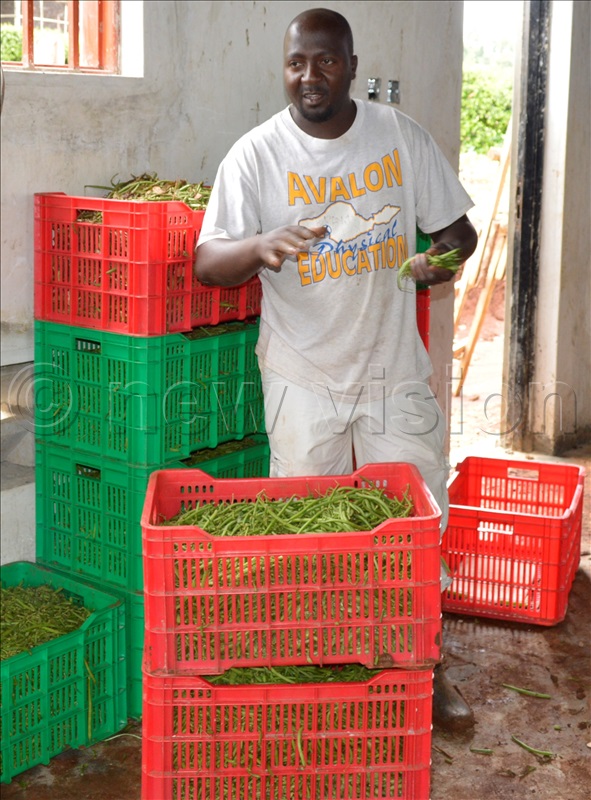By Umar Nsubuga
Isaac Malinga, a famous French beans farmer and exporter says at 50-55 days, fry picking for French beans should be done.
He says this involves randomly selecting and picking pods from across the garden to assess the quality – size and packability.
French beans are grown for the fresh market and processing. So, they are usually picked while still immature and the inner beans are just beginning to form in the pod.
“Pod diameter, not length, is the best indicator of quality. Buyers prefer pods with no bulge or only a slight bulge, indicating tender, young seeds. Over-mature snap beans with bulging pods are tough and fibrous, while immature pods are more susceptible to wilting. Freshness is evidenced by a distinct, audible snap when the bean is broken,” he explains.

According to Malinga, harvesting is done in crates, and two people can cover one bed from either side.
After plucking, he says the crates are assembled and kept in a shade – a charcoal cooler or cold room.
When harvesting, pick the pod from the stock (off the stem) to avoid injury and fungi infection.
“Morning to midday is the best time to pick the pods so that their freshness is preserved under the cool weather,” he advises.
The crops must be watered after picking so that they regenerate and get ready for the next picking which is done at an interval of two days for a full month, he says.
He explains that the residue (leftover crop) can be fed to animals or used to make compost. Traceability is key when harvesting to manage infections. That is the reason it is advisable to plant in blocks.
Harvesting is usually done twice a week for the fine beans and three times a week for the extra fine beans. This continues for around three weeks.
Gideon Zakke, an agronomist says a major setback is rejection of your produce if they do not meet the set quality standards. You end up regretting why you even thought of the idea.
Storage
For export, storage in a cold room is obligatory to preserve the shelf life of the product. Reducing temperature below 4°C causes blotches to appear; moderate ventilation helps to prevent pods from drying out.
The time lag between harvests to refrigeration must be as short as possible.





